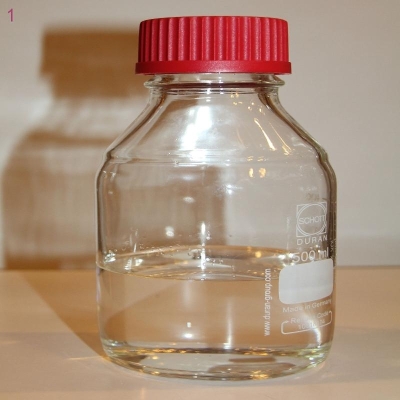-
Categories
-
Pharmaceutical Intermediates
-
Active Pharmaceutical Ingredients
-
Food Additives
- Industrial Coatings
- Agrochemicals
- Dyes and Pigments
- Surfactant
- Flavors and Fragrances
- Chemical Reagents
- Catalyst and Auxiliary
- Natural Products
- Inorganic Chemistry
-
Organic Chemistry
-
Biochemical Engineering
- Analytical Chemistry
-
Cosmetic Ingredient
- Water Treatment Chemical
-
Pharmaceutical Intermediates
Promotion
ECHEMI Mall
Wholesale
Weekly Price
Exhibition
News
-
Trade Service
Triphosgene is a highly toxic and hazardous chemical compound that is commonly used in the chemical industry for various applications.
It is primarily used as a reactive gas, which reacts with other compounds to form new chemical bonds.
This reaction results in the formation of new compounds with unique properties that can be used in a variety of applications.
In the chemical industry, triphosgene is used as a building block for the synthesis of various organic compounds.
It is used in the production of pharmaceuticals, agrochemicals, dyes, and other chemical products.
Triphosgene is also used in the production of plastics and polymers, which are essential components of many everyday products such as packaging materials, electronic components, and textiles.
The use of triphosgene in the chemical industry requires careful handling and strict adherence to safety protocols.
This is because triphosgene is highly toxic and can cause serious health problems if mishandled.
In this article, we will discuss the instructions for handling triphosgene in the chemical industry, as well as the safety precautions that should be taken to prevent accidents and mitigate the risks associated with this hazardous chemical.
Instructions for Handling Triphosgene
When handling triphosgene, it is important to follow a set of instructions that have been developed to ensure the safety of workers and the environment.
The following are some of the key instructions to keep in mind when handling triphosgene:
- Wear appropriate personal protective equipment (PPE): Triphosgene is a highly toxic chemical that can cause serious health problems if mishandled.
As such, it is important to wear appropriate personal protective equipment (PPE) when handling this chemical.
This includes wearing a respirator, gloves, and protective clothing. - Use appropriate storage facilities: Triphosgene should be stored in an appropriate and well-ventilated storage facility that is designed to prevent the release of this hazardous chemical into the environment.
It is important to ensure that the storage facilities are properly labeled and that workers are aware of their location. - Use appropriate handling procedures: Triphosgene should be handled with care to prevent accidental releases or exposures.
This means that workers should be trained in the proper handling procedures, including the proper use of equipment and the safe handling of containers and materials. - Monitor for potential leaks or spills: It is important to monitor the storage and handling areas for potential leaks or spills.
In the event of a spill, workers should be trained to contain the spill and prevent it from entering the environment. - Properly dispose of hazardous waste: Triphosgene is classified as a hazardous waste and must be disposed of in accordance with local and federal regulations.
This means that workers should be trained in the proper disposal procedures and that hazardous waste containers should be clearly labeled and stored in an appropriate location.
Safety Precautions for Handling Triphosgene
In addition to following appropriate handling instructions, it is important to take additional safety precautions to prevent accidents and mitigate the risks associated with triphosgene.
The following are some of the key safety precautions to keep in mind when handling triphosgene:
- Provide adequate ventilation: Triphosgene is a highly toxic chemical that can be inhaled and cause serious health problems.
As such, it is important to provide adequate ventilation in the handling and storage areas to prevent the inhalation of this hazardous chemical. - Use appropriate equipment: When handling triphosgene, it is important to use appropriate equipment that is designed to prevent leaks and spills.
This includes using appropriate containers and piping systems that are designed to prevent the release of this hazardous chemical. - Train workers in emergency procedures: In the event of







